How Amazon is challenging Australian market
The retail behemoth is changing Australia’s e-commerce landscape, with shoppers demanding fast delivery, quality products, and a seamless shopping experience.
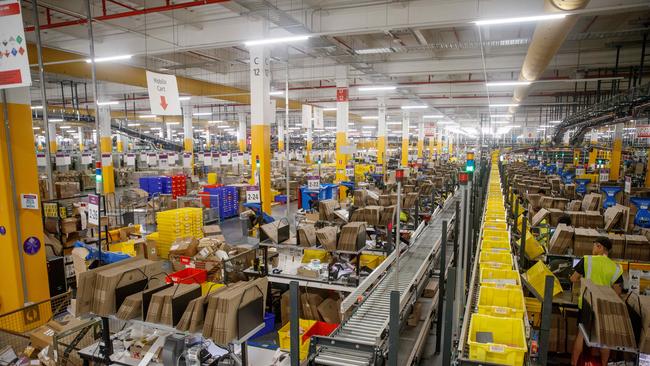
Australia’s e-commerce landscape is becoming more competitive with Amazon carving out its dominance.
The retail behemoth launched its Australian retail store in 2017 and is spending billions on its business in Australia.
The company has six fulfilment centres and 12 logistics sites in Australia.
It is spending $1.6 billion on adding five new operational sites, which are expected to open by 2026.
NewsWire took a look inside one of the fulfilment centres to see how Amazon’s innovation is changing the retail market in Australia.
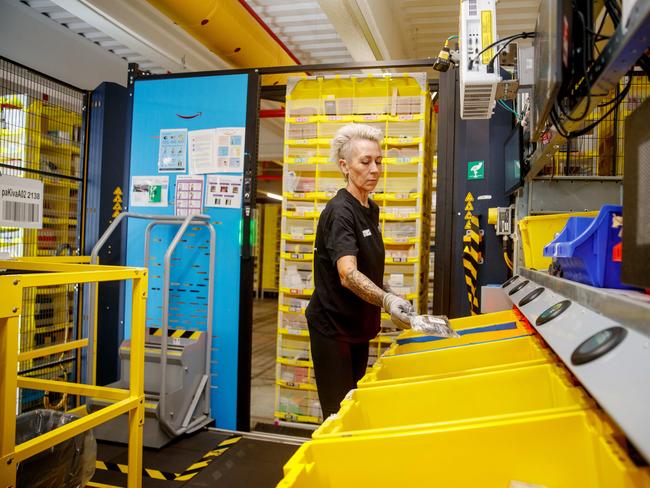
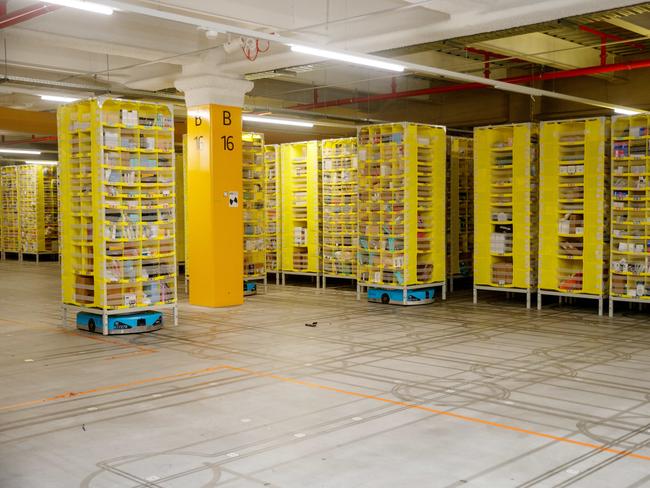
Inside the massive warehouse in Sydney’s Kemps Creek, stretching across 200,000 square metres, are towers of goods.
Robots are used to carry the towers across the warehouse, aiming to get orders to shoppers as quick as possible.
The robots can carry up to 450kg and glide through the warehouse floor by using 2D barcodes to read and map out the most efficient route to get to the team members.
Team members then pick the items ready to be packed.
There are more than 2000 humans working on site alongside the robots at the warehouse, with another set to open in Victoria’s north next year.
Amazon senior operations manager Lydia Avril said the robots allowed and supported humans to be more effective at their jobs.
“The time it takes to go in the old traditional buildings, with a trolley, go down the aisle … that takes a long time, and it’s also a lot of walking distance,” Ms Avril said.
“So here, (the robots) really help associates do their job a lot more effectively, and that’s our biggest aim.”
It comes as Amazon continues to carve out a path in the Australian marketplace, competition is getting steeper.
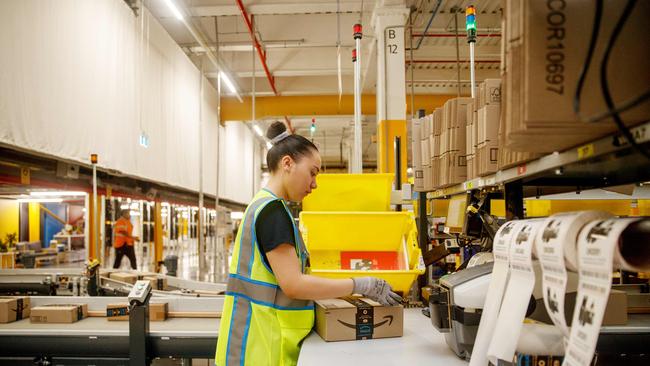
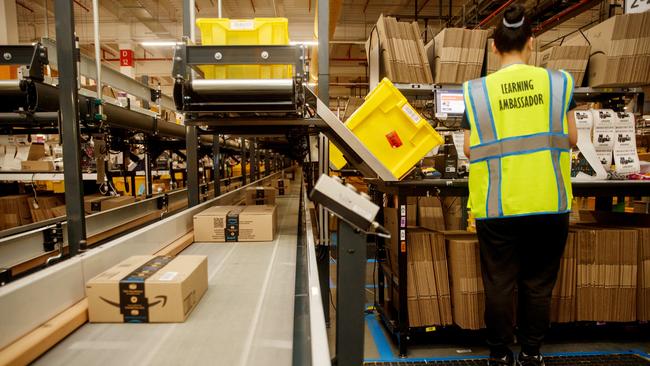
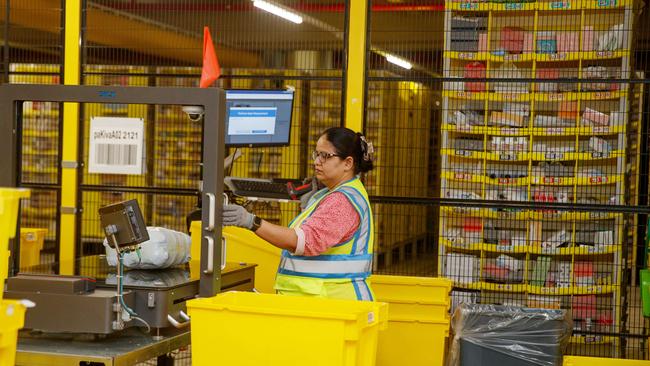
Ultra-cheap retailers Temu and Shein’s growing markets in Australia are tipped to stall in 2025, as Aussies’ trust in the brands falls.
New research by Pattern reveals only 12 per cent of customers trust Temu for its product quality, leading to a 7 per cent predicted a drop in shoppers in 2025.
Online fashion retailer Shein faces a similar challenge with trust levels at just 11 per cent.
Pattern Australia managing director Merline McGregor said Temu and Shein’s aggressive pricing and large marketing campaigns drew Australian shoppers in over the past 18 months, but customers were doubting the product quality.
“Early adopters have found these marketplaces unreliable. Although they may still expand in the future, Temu and Shein face a significant challenge in legitimising themselves within the Australian market and delivering on the customer experience,” Ms McGregor said.
It comes as Amazon’s popularity grows in Australia.
The stats show 1.1 million new Australians were brought to the platform in 2024 for a total of 7.9 million shoppers.
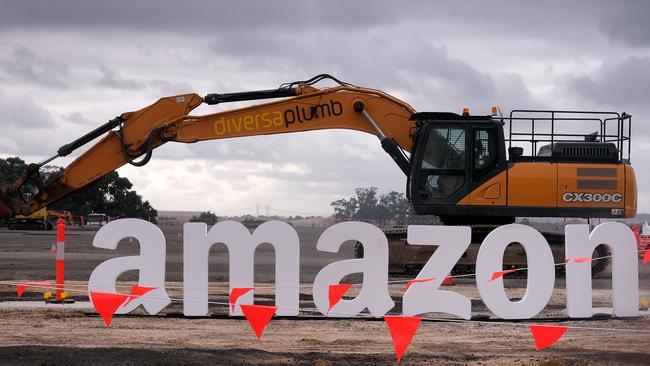
In FY24, Catch reported a $96m loss, including $23m restructuring costs and a non-cash impairment to its brand value.
The outlook for Amazon is strong with 63 per cent of Australians planning to shop on the platform in 2025.
“Amazon’s focus on fast delivery, quality products, and a seamless shopping experience sets it apart,” said McGregor.
“While Chinese platforms have disrupted the market, Amazon’s trusted reputation and ability to adapt – such as the launch of its low-cost ‘Haul’ storefront – ensure it stays ahead.”
The report comes just weeks after it was revealed the Chinese retailers had claimed their biggest victim in the Wesfarmers owned and operated marketplace Catch.
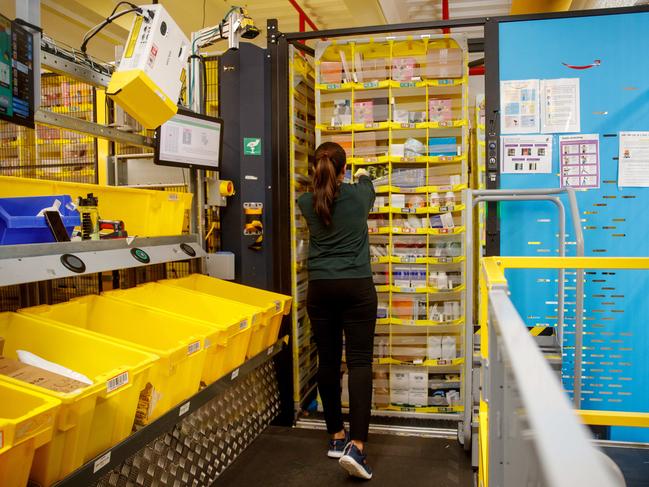
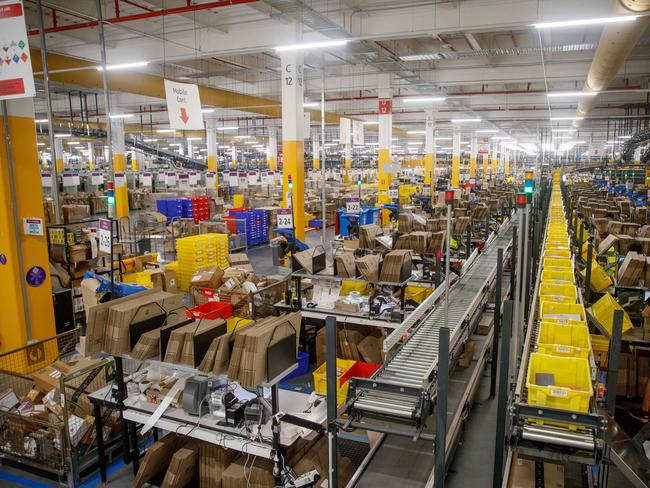
Workers ‘right to be worried’ about tech
Amazon isn’t the only major company turning to robots, with Coles now using robots to pick items at fulfilment centres across the country.
It’s understood the robots help humans by moving products around the warehouse, with team members still needed to pack and deliver the items.
Both companies say they use robots to make humans more effective at their jobs, however it raises the age old question of whether there’s a chance robots could completely take over human jobs.
RMIT Computer Science lecturer Dr Timothy Wiley said people were “very right to be worried about where new technology might come into place” when it came to robotics and warehouse work in general.
However Mr Wiley, who said he personally supported having robots collaboratively assist people in similar workplaces, said it could be argued that jobs had been lost to technology since the industrial revolution.
He said it was a case of “supporting human beings”, not replacing them.
“Some jobs have definitely disappeared, new jobs have come in,” Mr Wiley said.
“A lot of people are doing jobs now that didn’t exist many decades ago.
“In my line of work I’m teaching students technology, particularly in generative AI, that didn’t exist when I was in university – some have come literally in the last two to three years.
“So one would perhaps expect the job market will shift, and while some jobs may be affected, one might expect others to be created.”

He said the use of robotics in warehouses came down to “the four D’s of robotics”: the dull, dangerous, dirty and difficult.
“The reason this comes up … is because packing or warehousing often falls into this ‘dull’ category, and a little into dangerous,” he said.
“You’ve got the question, is this the type of job or role we actually want humans to do?
“Is it a matter of need, is it a matter of safety, speed and customer demand, of having products shipped out faster?”
He said it was a tough dilemma which may require education and retraining workers if jobs were to be lost to robotics.
“Something that is going to continue to be a question of society and government and policy, is when jobs disappear, or when jobs are changed, how do we support those people who are affected to retrain, re-skill and change their employment?” he said.
Companies would need to be willing to hire people who aren’t recent graduates as people would be in the midst of a career change, Mr Wiley said.
“People will be quite nervous and concerned, because maybe the answers aren’t fully in place,” he said.
However an Amazon spokeswoman emphasised there were “no plans” to have robotics at all Amazon fulfilment centres across the country, with the upcoming site in Melbourne’s north set to create up to 2000 jobs.
“People are the heart of our operation, and robotics and automation are used as a tool to augment and support the vital work our employees do every day,” the spokeswoman said.


